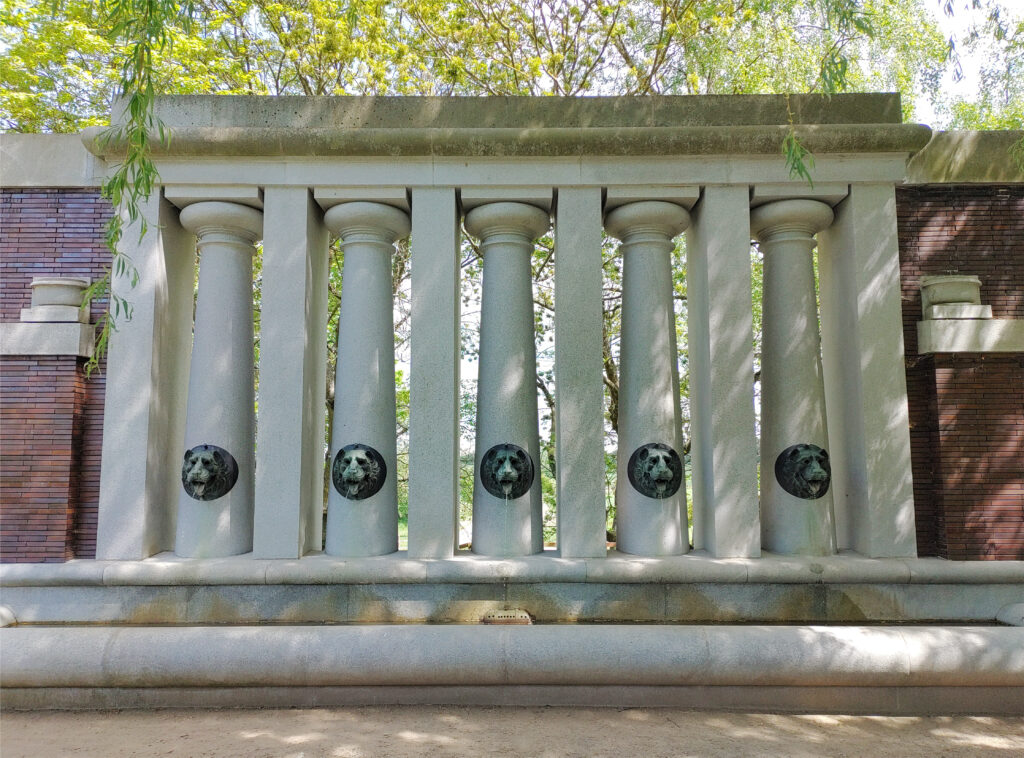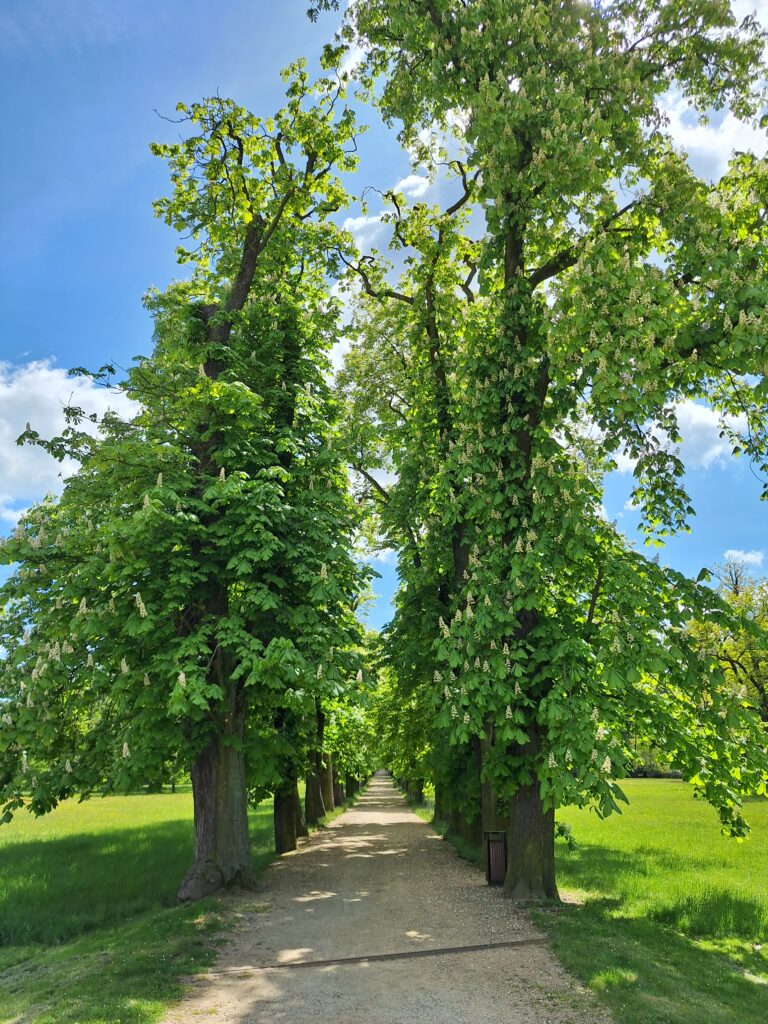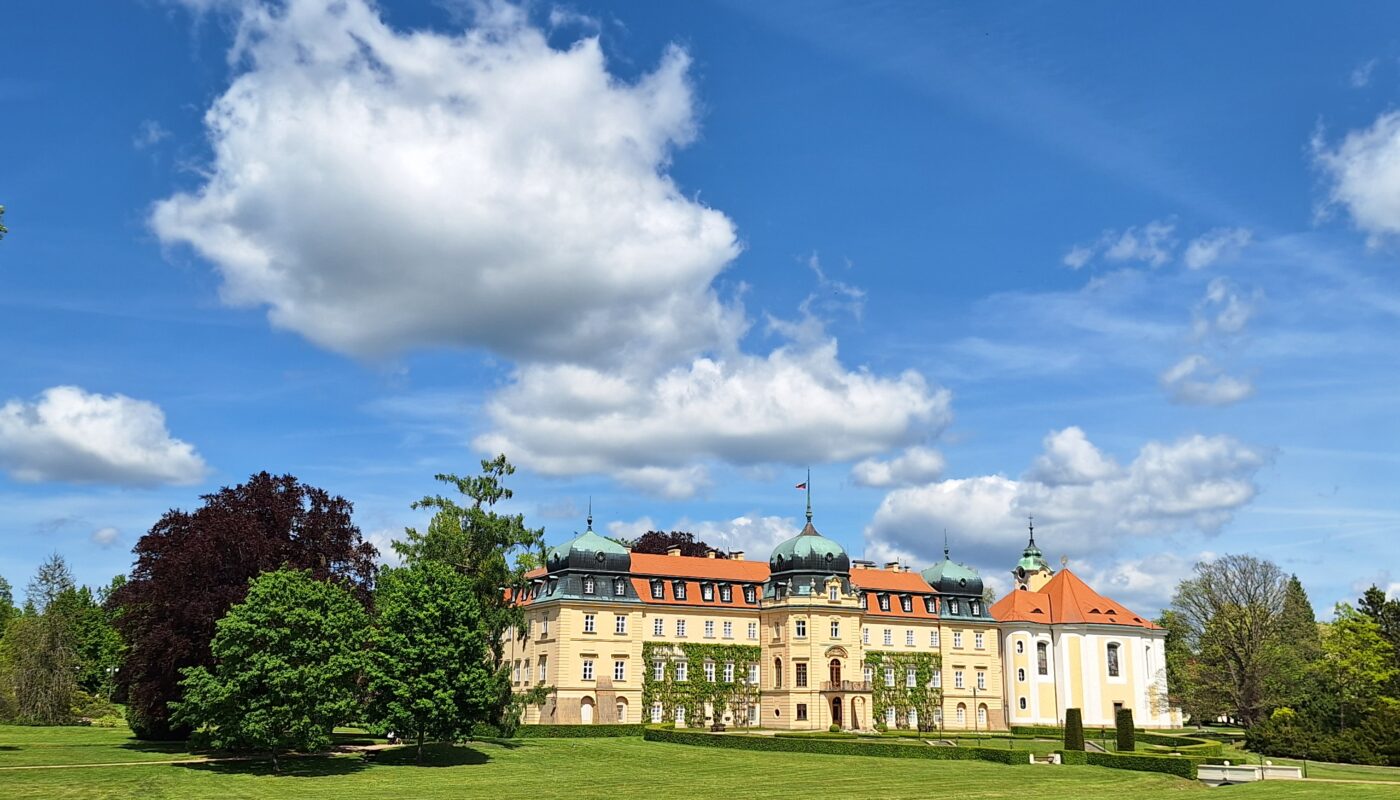Reading Time: 3 Minutes 45 Seconds
Short history
Lány Castle is a Baroque building located in the Central Bohemian Region, west of Prague.
Around middle of the 16th century, the Žejdlic family of Šenfeld built a rectangular, one-story castle in Lány on the site of a medieval fortress.
In 1589, King Rudolf II of Bohemia used the building as the foundation for an imperial castle that served as his hunting lodge.
In the 17th and 18th centuries, countless Baroque changes were made. And in the second half of the 18th century, the area passed into the hands of the family of the princes of Fürstenberg, who expanded the castle, added a chapel and modified the park.
In 1921, the Czechoslovak state bought the castle and the nearby forest, with the intent to get a quiet summer residence for the head of state.
Tomáš Masaryk liked the Lány estate so much that it became his permanent residence from 1935.
The president commissioned the Slovene architect Jože Plečnik to remodel both the castle and the park. He had become Masaryk’s favorite architect with the project to renovate Prague Castle, so the choice was not difficult.
Plečnik studied at the Vienna Academy of Arts under professor Otto Wagner and he was a prominent artist within the Viennese Art Nouveau movement.
Plečnik contribution
The landscape and architectural changes that Plečnik made in the style of modern classicism were mainly directed to the outdoor areas and to the park.
His project includes a memorial to the fallen of the First World War and a pyramidal fountain, both located in front of the main entrance to the castle park.
The architect expanded the palm house, to which he added a central vertical wing, and added one internal and one external fountains.
He built three stone bridges over the castle stream (Zámecký potok), featuring brick railings decorated with stone balls, and placed several benches around the park (the so-called presidential benches), which offer a spectacular view of the castle.
Additionally, he created a wooden apiary to honor the heritage of Slovene beekeeping.
In 1929, Plečnik completed his final masterpiece, a monumental work that stands as a true symbol of the new state: the Lion Fountain.
The fountain is situated on the wall along the eastern side of the park, by the pond.
The work consists of a brown brick wall, joined by five Doric columns of light stone, decorated with five bronze lion heads.

Each lion represents a region of Czechoslovakia: Bohemia, Moravia, Silesia, Slovakia and Subcarpathian Ruthenia.
From each lion head the water flows into a common basin, from which it emerges through another lion head, symbolizing the common state – the Czechoslovak Republic – established in 1918.
Tourist information
The park is open to visitors everyday, except for Fridays, from March until October.
Other than the architectural creation from Plečnik, you can relax, enjoy the beautiful nature and admire the many trees around.
The entrance to the park is free. You pay only if you want to join a 45 minutes guided tour of the castle, which includes Masaryk’s study and library and the representative salons (200kč for normal ticket, 400kč for families and 100kč reduced).
All the info is at this page.


How to get there
- By car it is pretty easy, turn on the navigation. A free parking area is in front of the entrance to the park.
- By bike it is an easy and flat 30km ride from the Zličín metro station.
- By train from Prague Masarykovo nádraží to Stochov and then a walk of about 2 km to the castle entrance. If you don’t want to walk, you can opt for a connection with bus 590 from Stochov to Lány.
- By bus 415 and 417 from Zličín directly to Lány, or by bus combinations like 304 from Zličín or Motol to Nové Strašecí + 619 to Lány.
Before starting your journey remember to check pubtran.cz (you can also download the app on your phone).
Extras
To fully enjoy the day out, before or after the castle park you can have a short hike in the part of the Křivoklátsko forest right behind the presidential reserve.
Note that you cannot reach the “outer” forest from inside the park, as its perimeter is delimited by walls. You have to go out from the main gate and walk around, as per the link of the hike above.
And don’t forget to stop at the Narpa restaurant and sweet-shop for some uncommon and tasty food or for some delicious pastry.

